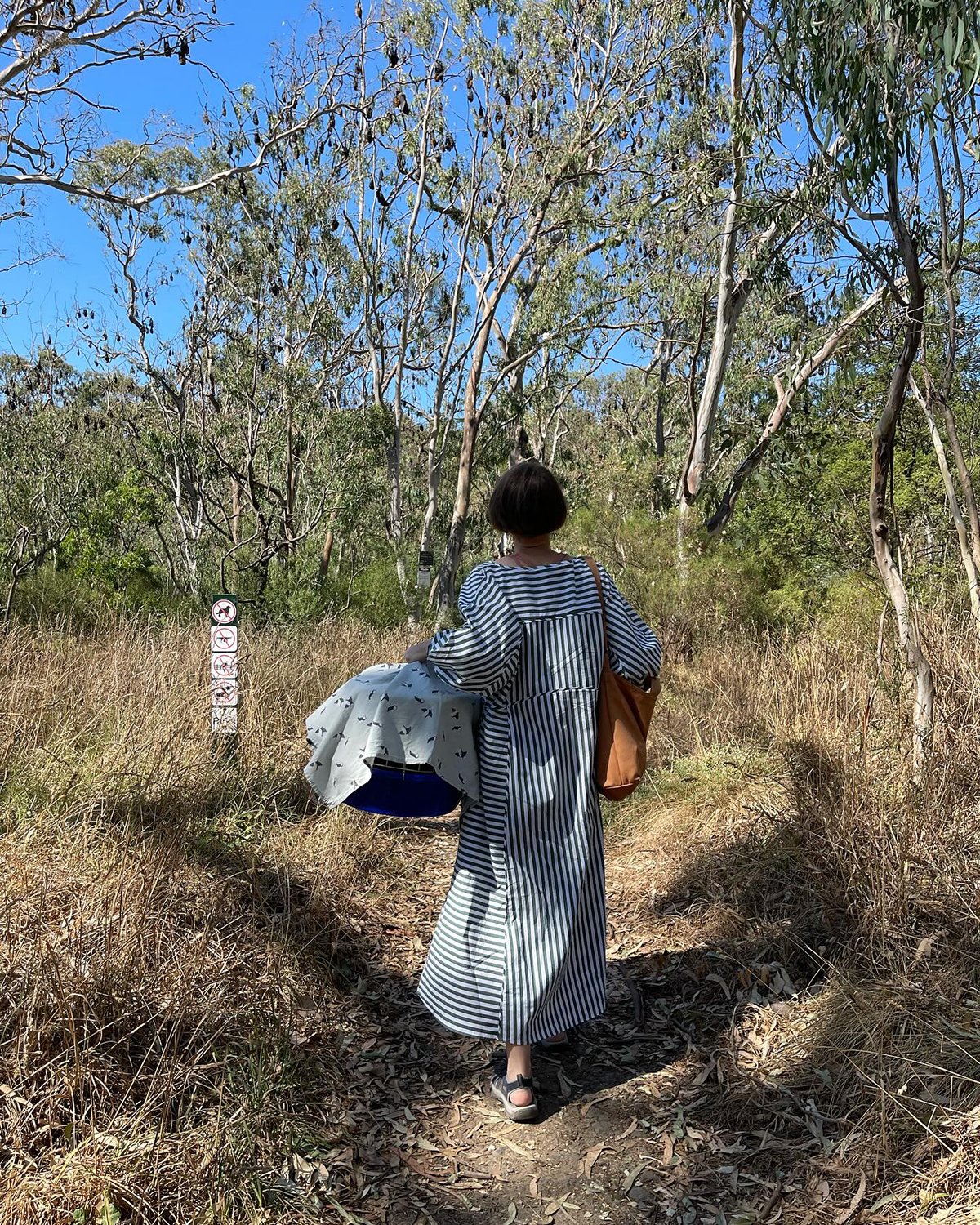Leaf canopy

Late March to mid April
Late March not only saw the successful soft release of our four ringtails, raised from orphaned joeys to robust juveniles, but the successful soft release of many of the Grey-headed flying pups we have had in care this season, with the last handful, the Woolfs, Virginia and Leonard, together with Cricket, to follow in mid-April. After obtaining their ‘wings’ at Bat Rescue Bayside’s crèche, where they were able to refine the art of socialisation and obtain flying skills supreme in the flight aviary, all these weeks of care later, many of the pups we helped raise have since graduated from the Soft Release Enclosure (SRE) by the Birrarung. From tiny to world-ready, and potentially flying overhead now as I type, in a wing-beat, here’s hoping the transition from crèche to soft release was and is a gentle one.
We might miss the presence of the netting-injury adults, Olive and Ernest, and the juveniles, enjoying their green grapes and watermelon, and the ringtail quartet, partaking in a shared grevillea and making light of tendrils of Eucalyptus radiata, but at the same time, we couldn’t be happier. Well done, tiny team! It was wonderful to see the Woolfs mid-manuscript, Cricket, and Pippy, pictured below in their beloved leaf canopy, come into their confident, wild selves.
Side by side, as has been the season, also pictured here, the undressed stages of a new work as she takes shape on the screen. The familiar dance stitches our focus on the backlit computer screen and the chopping of fruit and collecting of browse. We are currently working on a further two artists’ books. One, which is yet to reveal its name, but which features plenty of insects, up close, and the other, Restoring corridors, which will be a multi-panelled, double-sided artists’ book that when hung on the wall will make an interchangeable, reversible 100cm x 300cm slice of biodiversity in flux. An edition of four, it will be housed in an original watercolour-painted box, which you can see taking shape above, the artists’ book will be able to be viewed as individual, abstract leaves within the box, or as 50cm x 50cm panels, which can be turned to reveal a rich biodiverse habitat (on one side) or a fractured habitat (reverse side).
Both of which we’ll be launching at the tenth NGV Melbourne Art Book Fair, come the last weekend of May.
As we work, two particular thoughts from Amina Cain’s A Horse at Night: On Writing return to my mind. The first is of the lights in the house becoming like a stage, and as it gradually darkens, outside the house is where the reader sits; only, in this instance, the stage I am thinking of is on the screen. And the second is of the satisfaction of combining images and seeing how they exist together, “and being able to experience them like that. How things appear, and the richness of appearances. We ourselves come into view, everywhere we go, with other people, with objects, in landscapes”.
All of which as somewhere overhead, beautiful boy, Ernest, is flying with his Yarra Bend colony friends, after weeks of round-the-clock care at @bat_rescue_bayside, and a short spell with us (pictured above with Olive at their ‘table for two’ with grapes).
Ernest is one of the lucky ones to survive after being caught in fruit tree netting. His release was glorious! His lift, marvellous! Here’s to him finding some seasonal figs ripe for the munching. (Olive is currently still in care. Wings crossed.)
Freddie, a juvenile, short-stay ringtail, has also been returned home, to her patch in East Brunswick. And while she initially seemed reluctant to leave the soft embrace of the pouch, once she did, she scarpered at pace. As she made her way along where the papery limbs of the Melaleuca connected with the canopy of the lemonwood, we had the sense she was home, and knew the area like the underside of her tail. We hope she, like Ernest, leads a long, safe life.
Of course the outdoor enclosure didn’t stand empty for long.
Since then we’ve had a little 13-week-old gumnut of a Grey-headed flying fox, found hanging on a tree in a front garden in East Brunswick, and, as such, we named him Gumnut, for the duration of this stay with us; Laurie (from Lorimer Street), a Little red flying fox (Pteropus scapulatus) of exquisite, stubbly rustiness, who smelled, like legend told, of aniseed, and was covered in dust and dirt from where he collided; Cecil, an 11-and-a-half-week-old, Grey-headed flying fox, who came into care after being found on the outside of the soft release enclosure; and rounding things out, Martini, who was found on her lonesome in a tree in the courtyard of a nearby hotel.
Should all go well, as we continue working on our artists’ books in their various stages, Martini will be able to be soft-released with the Woolfs, Cricket, and Pippy at the Yarra Bend colony, and together they can take to the sky in confidence and curiosity for many, many years to come.
Image credit: Gracia Haby & Louise Jennison, Restoring corridors (detail), 2024, artists’ book





































